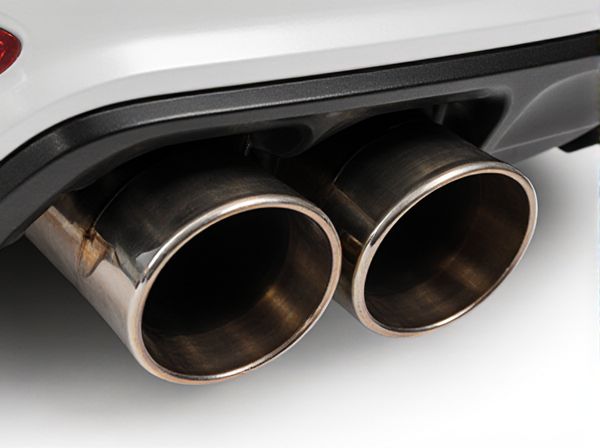
Photo illustration: V-band Clamp vs Flange Clamp
V-band clamps provide a secure, lightweight, and easy-to-install connection with a uniform sealing surface, ideal for high-performance exhaust systems and turbo applications. Flange clamps offer a robust, bolted joint that can handle higher pressures and provide more rigid support, making them suitable for heavy-duty industrial piping and larger diameter connections. Your choice depends on the specific application requirements, including ease of maintenance, pressure tolerance, and space constraints.
Table of Comparison
| Feature | V-band Clamp | Flange Clamp |
|---|---|---|
| Design | Circular metal band with a V-shaped groove | Flat plate bolted connection |
| Sealing | Uniform compression, leak-resistant seal | Dependent on gasket and bolt torque |
| Installation | Quick, tool-assisted tightening | Requires multiple bolts, longer time |
| Durability | High, maintains seal under vibration | Moderate, gasket may degrade over time |
| Maintenance | Easy removal and reinstallation | More labor-intensive due to bolts |
| Application | High-performance exhaust systems, turbochargers | Standard exhaust joints, budget setups |
| Cost | Higher initial cost | Lower initial cost |
Introduction to V-Band Clamps and Flange Clamps
V-band clamps provide a secure, compact connection commonly used in exhaust systems and turbochargers, characterized by a V-shaped metal band that evenly compresses a gasket for airtight sealing. Flange clamps rely on bolted flanges with gasket faces, designed to join pipes or components in systems requiring high-pressure resistance and precise alignment. Both V-band and flange clamps offer specific advantages in automotive and industrial applications, with V-band clamps favored for quick assembly and flange clamps preferred for heavy-duty sealing and structural stability.
Design and Construction Differences
V-band clamps feature a continuous steel band that tightens around a flanged joint, providing uniform radial pressure and a compact, lightweight design ideal for high-performance exhaust and turbocharger connections. Flange clamps utilize bolt-tightened flanges with gasket seating surfaces, offering robust sealing and easy maintenance for heavier-duty applications with higher pressure or vibration demands. The V-band's seamless construction allows quicker assembly and disassembly compared to the bulkier, bolted flange clamp design, impacting overall system weight and service efficiency.
Installation Process Comparison
V-band clamps offer a quicker installation process by using a single bolt for uniform clamping, reducing assembly time and ensuring a leak-proof seal. Flange clamps require multiple bolts and precise alignment, which can lengthen installation and increase the risk of uneven pressure or gasket damage. The streamlined design of V-band clamps makes them ideal for applications demanding frequent disassembly and reassembly, such as turbocharger connections or exhaust systems.
Strength and Durability
V-band clamps offer superior strength due to their uniform clamping force, which minimizes leakage and maintains secure connections under high pressure and vibration. Flange clamps, while easier to assemble and disassemble, typically provide less durability and can loosen over time when subjected to heavy mechanical stress. For applications requiring long-term reliability and high-performance sealing, V-band clamps are often preferred for their robust construction and enhanced durability.
Sealing Performance and Leak Prevention
V-band clamps provide superior sealing performance by applying uniform radial pressure around the joint, significantly reducing the risk of leaks in high-vibration and high-temperature applications. Flange clamps rely on gasket compression, which can degrade over time and increase leak potential, especially under thermal cycling or mechanical stress. Advanced V-band clamp designs incorporate precision-engineered grooves and elastomer seals to enhance leak prevention, making them ideal for critical exhaust and turbocharger connections.
Maintenance and Serviceability
V-band clamps offer faster maintenance and serviceability due to their quick-release design, allowing easier access for disassembly and inspection compared to flange clamps, which require more time-consuming bolt removal. V-band clamps provide consistent sealing performance under high vibration and thermal cycling, reducing the frequency of maintenance interventions. Flange clamps, while robust, often demand more labor during servicing, impacting downtime and overall operational efficiency.
Common Applications and Industries
V-band clamps are commonly used in automotive exhaust systems, turbocharger connections, and HVAC systems due to their ability to provide secure, leak-free seals with quick assembly and disassembly. Flange clamps are widely employed in heavy-duty piping systems, chemical processing plants, and food and beverage industries where durable, high-pressure sealing between pipe flanges is essential. Both clamps support applications requiring efficient maintenance and high performance in sectors such as aerospace, marine, and industrial manufacturing.
Cost and Availability Analysis
V-band clamps typically offer lower initial costs and easier availability due to their widespread use in automotive and industrial applications, making replacement parts more accessible and affordable. Flange clamps, while often more expensive upfront, provide enhanced sealing performance and durability, which can reduce long-term maintenance expenses in high-pressure systems. The choice between V-band and flange clamps depends on balancing initial budget constraints against the operational demands and frequency of clamp replacement.
Pros and Cons of V-Band Clamps
V-band clamps provide a compact, lightweight connection ideal for high-performance exhaust systems and turbocharger assemblies, allowing quick assembly and disassembly without the need for tools, which enhances maintenance efficiency. Their uniform clamping force minimizes leaks and vibration, but they require precise alignment and can be costlier than traditional flange clamps. Despite higher initial investment, V-band clamps offer superior durability and strength, making them favorable for high-temperature and high-pressure applications.
Pros and Cons of Flange Clamps
Flange clamps offer superior load distribution and enhanced sealing capabilities, making them ideal for heavy-duty pipeline applications where leak prevention is critical. Their robust design supports high-pressure environments, but flange clamps tend to be bulkier and require more installation time compared to V-band clamps. Maintenance can be more challenging due to the need for precise alignment and bolting, which may increase downtime in dynamic systems.
 caratoz.com
caratoz.com